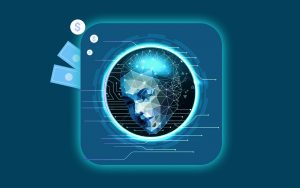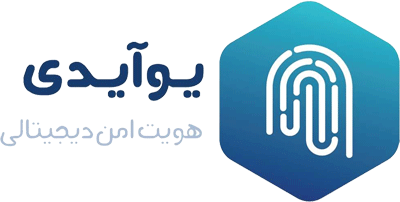Your Digital Identity allows you to show who you are while you need to enter services online. Nowadays, proving your identity in the real world could be a straightforward function; when you up to open a bank account, checking, account book a hotel room, travel, and more other things, even purchasing alcohol, you need to prove your identity with your ID card or other documentation they may be required. The business enterprise you are working with can physically confirm that you are who you declare to be.
This procedure gets complicated within the digital world, and companies need to confirm your identity even when you are not physically able to do it. So here, digital identity steps forward.
What Is Digital ID In All This?
Digital identification comprises specific identifiers and behavioral styles tied to that character, organization, or device. A strong digital identification acts as a defense against cyber threats.
The information that forms your digital identity and can identify you is grouped into digital attributes and digital activities.
Personally identifiable information (PII) is a digital attribute covered in online facts to personal and public zone organizations and government services. These are usually used while opening a bank account, paying taxes, or applying for a process.
Digital activities are an online behavioral form that includes your search history, social media hobby, and phone with other statistics that track your data, including your location.
Cybersecurity Risks and Currency for Fraudsters
Your digital identity acts as a variety of currency on the net; your digital identity can offer you access to your accounts, allow you to open new accounts, and provide credibility to interact in a very reliable way with people, products, and services online. Today, you can use and access your digital identity for just about everything in everyday life, from social media to managing service providers in financial services, healthcare, and other fields.
On the other hand, your online information can be available to hackers, thieves, and breachers, which has increased with the advancement of technology; much personal data of the past has become public; your information requires more care with these cases.
Digital identity information can be exposed with:
- Public Wi-Fi networks
- Unsecured websites and apps
- Phishing attempts
- A weak or limited number of passwords
- Deepfake videos, voice, and graphics
- Location sharing settings
- Adding strangers to social media accounts
All this information is out there if you know where to seek it. Get to know with the network of sites known as the ”Dark web” within the deep web; you cannot access this with typical search engines or web browsing; on the dark web, people’s information and identity data are acquired, sold, or dumbed.
While people generally tend to consider Social security numbers as valuable, they can be bought at the dark web for as low as a dollar. Banking information, credit card details, medical records, and more can be garnered at different prices.
These marketplaces do not just have individual identification data — they have bundles that integrate a passport, a selfie, and an application bill to make the process of a fraudster that a lot easier.

Operating in an increasing number of the digital world, many agencies need to affirm the identities of their clients and customers online. Bad actors do not belong withinside the online ecosystems of economic institutions, the sharing economy, online gaming, mobility services, relationship websites, and elsewhere. Organizations have an enterprise vital to care approximately and affirm the digital identities in their customers and clients.
This imperative is pushed through 3 key issues:
- Trust
Your online users and clients believe that you can protect their data. However, there is another aspect to consider; in many industries, you are interacting with one another. Whether a buy-sell-trade exchange, ridesharing, house rental, or different comparable online platform, believe is the linchpin of all of it. The foundation of trust is organizing that the man or woman on the alternative end of the transaction is who they say they are.
- Fraud risk
Identity information stored online runs the danger of being compromised by fraudsters. Account fraud is one of the fastest kinds of fraud. This scam not only pockets your customers but also hurts companies a lot.
- Compliance
KYC and AML compliance guidelines are probably known for their direct impact on online processes, especially account opening. But there are other issues, including CCPA compliance in California and European GDPR in Europe, which require companies to form a strong connection between the digital identities of their online customers.
What’s wrong with the traditional approaches to online digital identity verification?
Most businesses use a combination of traditional and modern identity verification to ensure that their online customer’s identity matches the customer’s real-world identity, including security questions, passwords, ID badges, or biometric data.
The problem is that some of these can be easily gathered from the internet (or dark web), and things you have got, such as a cell phone number or SIM card, are progressively risky since they can be harmed, misplaced, or stolen.
What if that person contains a legitimate, yet stolen, ID document? Likewise, looking at an account record is not any longer helpful. Companies have to know that the person interfacing with them online is whom they purport to be at that very moment.
Gartner recommends that organizations move far from digital identity proofing solutions that depend on shared secret verification, like out-of-wallet knowledge questions or memorable personal data (often used as a part of knowledge-based verification solutions).
These two questions:
- Are you actually who you say you are?
- Are you still really who you say you are?
These are essential identification questions to maintain that the person who later logs into the account is who initially opened the account.
Companies are using biometrics with more traditional ID verification, to strengthen their defenses against online fraud, Improving customer onboarding, maintain compliance with AML and KYC, and make trust in their online services.
Also, a solution for these is the digital identity further corroborated with a selfie and authorized liveness detection to confirm that the user is physically present. This powerful combination of verifying who someone is, binding that person to face-based biometrics, and further securing the transaction with certified liveness detection allows modern organizations to manage more securely within the digital world.










